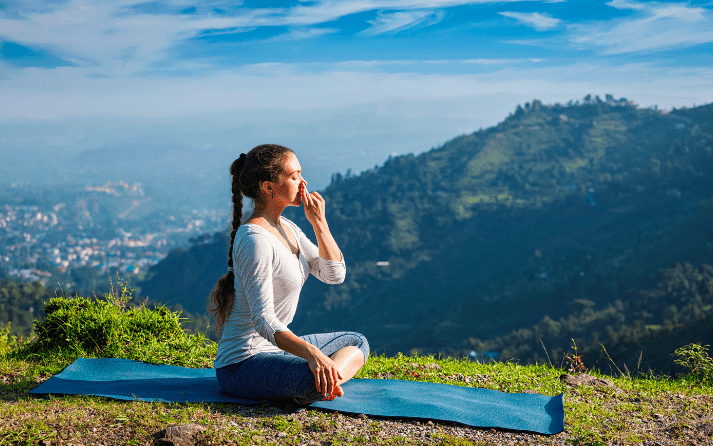In today’s fast-paced world, where stress and anxiety seem to be constant companions, mastering the art of healthy breathing can be a game-changer for your overall well-being. From ancient practices to modern techniques, there are numerous methods to explore. Here are 15 effective breathing techniques to help you achieve a state of calm and vitality:
1. Diaphragmatic Breathing: Also known as deep belly breathing, this technique involves inhaling deeply through the nose, allowing the diaphragm to expand, and exhaling slowly through the mouth.
2. Equal Breathing: Inhale and exhale for the same count, creating a balanced rhythm. This technique promotes relaxation and focus.
3. Alternate Nostril Breathing (Nadi Shodhana): This yoga breathing technique involves breathing in through one nostril while closing the other, then switching sides. It helps balance the body’s energy channels.
4. Box Breathing: Inhale for a count of four, hold for four, exhale for four, and then hold for four again. Repeat this cycle for several rounds to reduce stress and increase mental clarity.
5. 4-7-8 Breathing: Inhale for a count of four, hold for seven, and exhale for eight. This method is particularly effective for promoting relaxation and improving sleep quality.
6. Breath Counting: Simply count each breath, focusing your attention on the sensation of the breath entering and leaving your body. This mindfulness practice helps quiet the mind and reduce stress.
7. Resonant Breathing: Find a comfortable breathing rate that feels natural and soothing, typically around five to seven breaths per minute. This technique can enhance relaxation and improve heart rate variability.
8. Pursed Lip Breathing: Inhale through the nose and exhale slowly through pursed lips, as if blowing out a candle. This technique can help improve lung function and ease shortness of breath.
9. Humming Bee Breath (Bhramari): Inhale deeply and exhale while making a humming sound like a bee. This practice can calm the mind and alleviate tension.
10. Sitali (Cooling Breath): Curl your tongue and inhale deeply through the mouth, then exhale slowly through the nose. This technique can help cool the body and reduce stress.
11. Kapalabhati (Skull-Shining Breath): This dynamic breathing exercise involves forceful exhalations followed by passive inhalations. It can boost energy levels and clear the mind.
12. Breathwalking: Coordinate your steps with your breath, inhaling for a certain number of steps and exhaling for the same count. This mindful walking practice combines the benefits of exercise with focused breathing.
13. Ocean Breath (Ujjayi): Inhale deeply through the nose and exhale with a slight constriction in the throat, creating a sound similar to ocean waves. This technique can enhance concentration and calm the nervous system.
14. Guided Imagery Breathing: Visualize a peaceful scene while breathing deeply and slowly. This technique can reduce stress and promote a sense of inner peace.
15. Belly Breathing with Affirmations: Combine diaphragmatic breathing with positive affirmations, such as “I am calm and centered,” to cultivate a sense of empowerment and relaxation.
By incorporating these breathing techniques into your daily routine, you can tap into the power of your breath to reduce stress, increase energy, and enhance your overall health and well-being. Experiment with different methods to find the ones that resonate most with you, and remember to breathe deeply and mindfully, one breath at a time.
Disclaimer:
The information provided in this article is for educational and informational purposes only. These breathing techniques are not intended to diagnose, treat, cure, or prevent any disease or medical condition. It is essential to consult with a qualified healthcare professional before beginning any new breathing practice, especially if you have any pre-existing health concerns or conditions. Additionally, please be aware that individual responses to these techniques may vary, and it is essential to listen to your body and adjust as needed. The author and publisher of this article shall not be held responsible for any adverse effects or consequences resulting from the use or misuse of the information presented herein. Always prioritize your safety and well-being when exploring new wellness practices.













